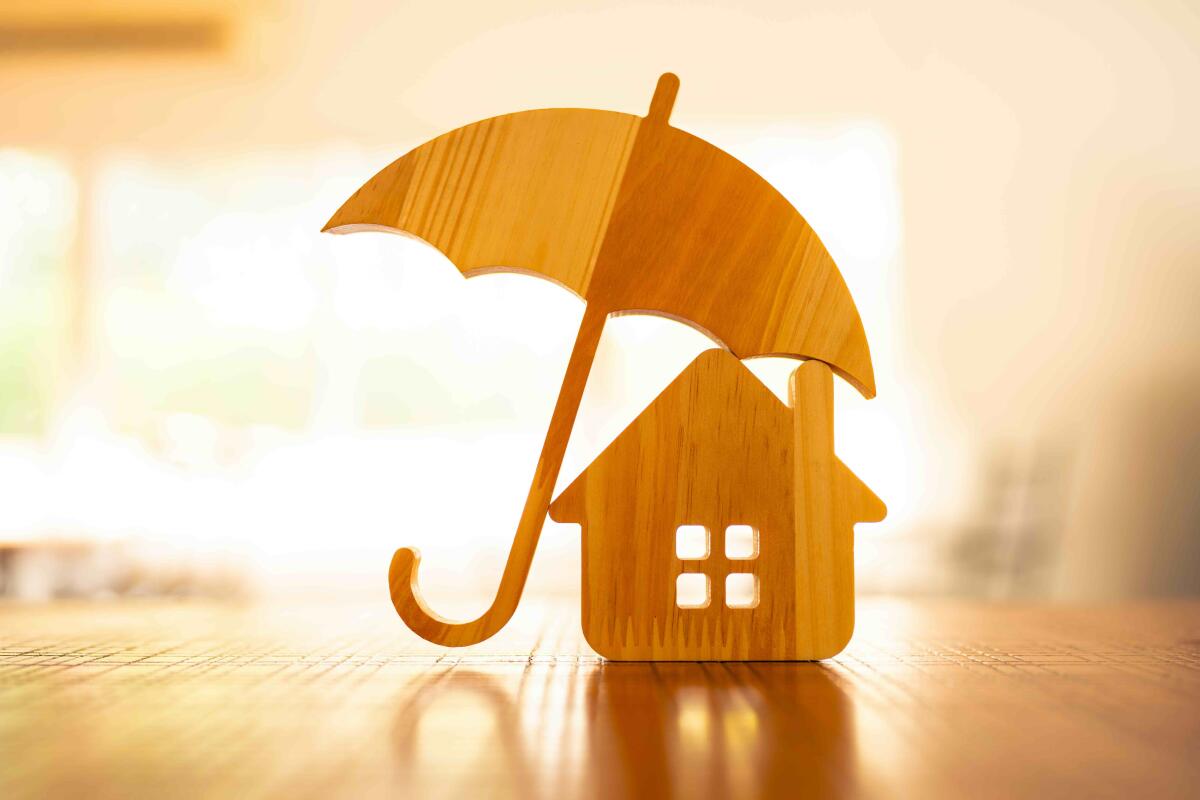Think Your Homeowners Insurance Payout Is Too Low? Here’s How to Push Back

- Share via
Many wildfire survivors in Los Angeles are running into the same frustrating pattern after filing their insurance claims. The payout falls short of what they need to rebuild, or the check might only cover part of the damage based on a computer-generated estimate that doesn’t match reality.
If you believe your insurer has underpaid you, there are steps you can take to challenge the amount and demand a fairer settlement. Amy Bach, executive director of United Policyholders, a nonprofit that advocates for insurance consumers, shared guidance on how to push back.
Get an Independent Estimate
“If your insurance company has offered you less than what you believe you’re entitled to ... start by getting an independent estimate of your loss,” Bach said.
This could come from a local contractor or builder. If the underpayment relates to your home’s structure, hire someone with experience in post-disaster assessments. If it’s about your personal belongings, prepare a detailed contents inventory.
Bach also recommends pairing your estimate with a scope of loss, which documents the quantities and qualities of materials that were in your home, without including prices. It provides more detailed information, such as the square footage of carpeting, the type of countertops, molding details, and whether any features were custom.
“We really encourage people to take the time … so that they can compare apples to apples with the insurance company’s estimate,” Bach said.
Emergency Shelters & Housing Assistance
Red Cross Launches Second Wave of Financial Assistance for Wildfire Survivors
Red Cross launches 2nd phase of direct cash aid for Palisades/Eaton wildfire survivors in LA. Check eligibility & learn how to apply before the May 13 deadline.
It may cost money to do, Bach added, but it’s especially important for people who want to buy a new home instead of rebuilding.
When generating payouts, insurers often rely on software like Xactimate to estimate costs, Bach said.
“The default settings are for tract homes and flat areas. The pricing is not going to be realistic for California very often,” because of the custom homes and higher building costs, Bach explained.
Insurers may also use contractors who, according to Bach, “are friendly to them, who are going to say what they want.” They are typically “on the low side of their quotes,” she added.
When it comes down to it, “having a real-life local builder give you an estimate to put your house back the way it was, before the loss, is going to get you a lot farther than anything else,” Bach said.
Use these tips to avoid scams and unlicensed contractors as you rebuild after a wildfire. Learn how to check credentials and report fraudulent activity.
Make Your Request
Once you have your own documentation, send it to your insurer with a clear and professional letter about your claim.
“Present your position … and reference the laws that insurance companies are obligated to follow,” Bach said.
This letter should include your independent estimates, photos, receipts, and any other supporting documentation. Clearly state the amount you’re requesting, why you believe it’s justified, and that you expect the company to comply with California insurance regulations.
“You have to be businesslike about it — this is a negotiation,” Bach said.
Escalate and Get Help
If your insurer still won’t budge, there are other steps to take to increase the payout, like filing a complaint with the Department of Insurance.
California’s Department of Insurance accepts consumer complaints online and may contact the insurer to help get to a resolution. This step creates a formal paper trail, which can be helpful if the dispute continues.
“People go off track in their negotiations with their insurance company, because the insurance company thinks they’re trying to profit from their loss,” Bach said. “That’s why we really emphasize proving your case through independent documentation from third parties.”
Wildfire Insurance & Legal Resources
Navigating Your Fire Insurance Claim Process and What to Watch Out For
This guide provides a comprehensive overview of the fire insurance claim process, including understanding your policy, documenting damage, and working with your insurance provider to ensure a smooth recovery.
If the matter remains unresolved, Bach said it may be time to bring in outside help like a public adjuster or a lawyer.
Public adjusters typically charge a percentage of your settlement, which is paid after it is secured. Under California law, public adjusters cannot take more than 10% of the total insurance recovery claims related to a declared disaster, like the Palisades and Eaton wildfires.
Bach recommends using California-based adjusters, checking their references, and ensuring they’re members of reputable trade associations, such as the Pacific Coast Association of Public Insurance Adjusters (PCAPIA) or National Association of Public Insurance Adjusters (NAPIA).
Bach said it’s the best way to ensure they know California law and can help you recover everything you’re owed to rebuild “stick for stick, board for board, the exact same house that you had.”
Being an advocate for yourself, staying organized, pacing yourself, and comparing notes with neighbors insured by the same company can make all the difference when disputing a payout, Bach said.
“Your insurance company is not on your side or your good neighbor. They’re a for-profit business,” Bach said.
Business to Business
Connect with the Southern California business community—sign up for our weekly newsletters to stay informed.
You may occasionally receive promotional content from the Los Angeles Times.



